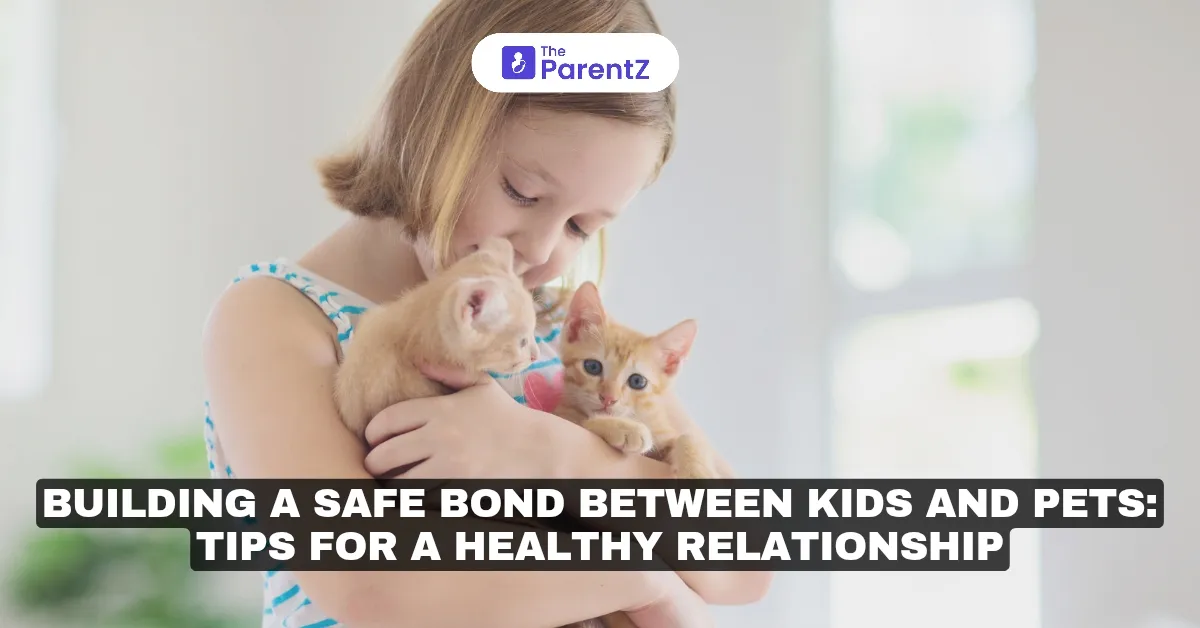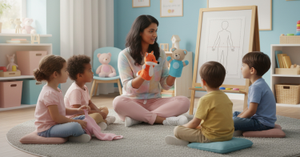The Importance of Pets in a Child’s Life
Pets can play a significant role in a child’s emotional and social development. They provide companionship, teach responsibility, and offer unconditional love. However, forming a safe bond between kids and pets requires understanding the needs of both the child and the pet, ensuring positive interactions, and taking preventive measures to avoid accidents or injuries. By fostering a healthy relationship between children and animals, families can create an environment of trust, respect, and mutual love.
Establishing Safety Boundaries
Before fostering a strong bond between kids and pets, parents should establish clear safety boundaries to prevent accidents. Safety should always be a priority, especially when introducing young children to new pets.
1. Supervised Interactions: Always supervise interactions between pets and young children. Children might unintentionally hurt or startle a pet, and pets might react unexpectedly. Close supervision ensures that both the child and the pet are safe during their interactions.
2. Teach Gentle Touching: Teach your child how to interact with pets gently. Explain the importance of not pulling on the pet’s ears, tail, or fur. Kids should learn how to pet or hold animals calmly, avoiding sudden movements that might frighten the pet.
3. Respect Personal Space: Teach children to respect the pet’s personal space, especially during meals, sleep, or when the pet is showing signs of distress. Establish “safe zones” where the pet can retreat to when they need rest or quiet time.
4. Age-Appropriate Pet Care: Introduce your child to basic pet care tasks that they can manage according to their age and abilities. This could include feeding the pet, filling their water bowl, or brushing their fur. Encouraging responsibility can strengthen the bond between child and pet while teaching valuable life skills.
Introducing a New Pet to the Family
Introducing a new pet into the household can be exciting but requires careful planning to ensure a smooth transition for both the pet and the child.
1. Prepare Your Child: Before bringing a new pet into the home, talk to your child about what to expect. Explain the pet’s habits, needs, and how to care for them. If it’s a new pet for both the child and the family, get the child involved in choosing the pet and preparing the home.
2. Slow Introduction: When introducing a pet to the home, do so gradually. Allow the pet to get used to the new environment first, then slowly introduce your child to the pet. This approach allows both the child and the pet to become accustomed to each other without feeling overwhelmed.
3. Observe Body Language: Pets communicate through their body language. Teach your child to recognize signs of stress, fear, or discomfort in the pet. For example, a dog’s wagging tail generally indicates happiness, but if the tail is stiff or tucked, it may be a sign of anxiety. This will help your child understand when the pet needs space.
Fostering Positive Interactions
Building a safe and loving bond between kids and pets requires positive, consistent interactions. These interactions lay the foundation for a strong relationship based on trust and mutual respect.
1. Positive Reinforcement: Reward your child with praise and small rewards when they interact appropriately with the pet. Similarly, reward the pet with treats and affection when they behave well around the child. This reinforces the idea that good behavior leads to positive outcomes for both parties.
2. Play Together: Encourage your child to engage in play with the pet. Whether it’s fetching a ball with a dog or playing with a cat’s toys, interactive play helps develop a deeper bond between the child and the pet. Always ensure that the games are safe for both the pet and the child.
3. Teach Empathy: Pets provide an opportunity to teach children empathy. Show your child how to recognize when the pet is in distress, hungry, or needs attention. Encourage them to look after the pet’s emotional and physical needs, helping them develop compassion and nurturing qualities.
4. Modeling Positive Behavior: Children learn a lot from observing their parents. Be sure to model positive interactions with pets. Show respect by treating the pet kindly and calmly, and encourage your child to follow your example.
Addressing Behavioral Issues
Sometimes pets may display behavior that could be concerning, especially when interacting with children. It’s important to address these issues calmly and with the right approach.
1. Teach the Pet Commands: Basic obedience training is essential for ensuring that pets respond well to commands. Teaching pets simple commands like “sit,” “stay,” and “come” can help control their behavior, especially during interactions with children. Training can also provide pets with mental stimulation and a sense of structure.
2. Recognizing Aggression: If a pet displays signs of aggression, such as growling, snapping, or biting, it’s important to intervene immediately. Consult a veterinarian or professional animal trainer to address the issue. Don’t ignore aggressive behavior, as it can escalate over time.
3. Handling Fear and Anxiety: Some pets, particularly rescue animals, may have a history of trauma that could cause fear or anxiety around children. Patience and understanding are key when helping a pet adjust to a new environment. Provide a calm space for the pet to retreat to, and gradually introduce them to new situations at their own pace.
Health Considerations
While pets provide many benefits, it’s also essential to consider health and safety precautions to keep your child safe.
1. Regular Veterinary Check-ups: Ensure that the pet is regularly checked by a veterinarian, is up to date on vaccinations, and is free from parasites like fleas or ticks. A healthy pet is less likely to transmit illnesses to children.
2. Hygiene and Cleanliness: Teach your child to wash their hands after handling the pet, especially after touching pet food, waste, or toys. Regularly clean pet bedding, food dishes, and play areas to minimize exposure to bacteria and allergens.
3. Allergies and Sensitivities: Some children may have allergies to pet dander. If you suspect that your child may be allergic, consult a pediatrician and consider getting allergy testing to determine if any specific pets should be avoided.
Conclusion: Building a Lifelong Bond
Building a safe bond between kids and pets requires careful planning, consistent positive reinforcement, and a commitment to safety. By teaching children how to treat animals with kindness and respect, parents can help nurture a relationship that fosters empathy, responsibility, and love. Whether it’s through supervised playtime, pet care responsibilities, or simply sharing companionship, pets offer children valuable lessons that will last a lifetime. With the right approach, families can ensure that their pets are a safe, loving addition to their home.








Be the first one to comment on this story.